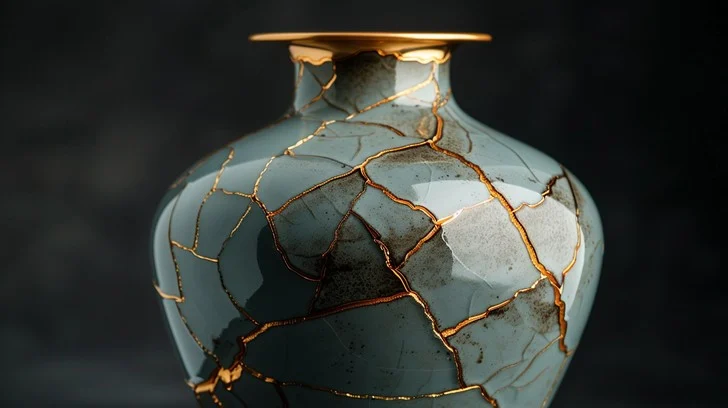Embracing the Philosophy of Kintsugi
In the last three posts we looked at people who, at first glance, appeared to be flawed designs only to realize the passion and commitment they demonstrated to rise above the “flaws” led them to become very good and valuable.
In this post, I’d like to look at beautiful designs that for whatever reason have been broken, potentially rendering them worthless if not for someone intervening, repairing, and restoring not only beauty but actually increasing the value and worth of the design.
Kintsugi, the ancient Japanese art of repairing broken pottery with gold, embodies a philosophy that celebrates the beauty and value increased after being broken. Rather than hiding flaws, Kintsugi artists paint each fracture with lacquer dusted in gold or silver, highlighting the history of the piece and transforming its perceived “imperfections” into features that enhance its aesthetic appeal. This approach fosters a deep appreciation for the story behind the art, illustrating how brokenness can lead to a greater, more valuable existence.
In today’s world, where perfection often reigns supreme, the lessons of Kintsugi resonate more than ever. It teaches us to view our struggles and hardships as integral parts of our journey. In a society that sometimes dismisses brokenness as a liability, Kintsugi redefines it as an opportunity to create something unique and extraordinary. As we explore this concept further, we will examine how various designs and creations—once deemed flawed or worthless—can be revitalized through smart interventions and restoration efforts, echoing the Kintsugi spirit.
The Journey from Brokenness to Beauty
Many artistic expressions, whether functional or decorative, can suffer from damage due to accidents or the passage of time. However, the potential for revival exists in each shattered piece. Consider a vintage vase that has been cracked during a move or a cherished coffee table scarred by years of use. If left unattended, these items could find themselves discarded, stripped of their worth and beauty. Yet, through careful restoration and the philosophy of Kintsugi, they can emerge as renewed treasures that not only retain their original charm but also gain new life.
The journey from brokenness to beauty requires patience, skill, and a vision. Skilled artisans meticulously assess each piece, choosing their materials with care to ensure that the repair enhances rather than detracts from the item’s inherent qualities. Through the meticulous application of gold—or in some cases, other precious metals—broken pottery can achieve breathtaking transformations. This process exemplifies how thoughtful intervention can elevate what might have been perceived as a loss into something striking and valuable. The end product tells a tale of resilience, beauty, and the remarkable capacity to overcome adversity.
The True Value of Restoration
In evaluating the essence of Kintsugi, we also come to appreciate the importance of restoration beyond the realm of art. Everyday objects, relationships, and even our personal journeys can bear the scars of their experiences. Yet, much like the repaired pottery, these aspects of life can gain depth and character thanks to the challenges faced along the way. When we commit to nurturing and mending what is broken, we unleash the potential for renewed value that goes beyond surface appearances.
Kintsugi challenges us to reflect on our own lives and the beauty that may lie in our scars. The art reminds us that flaws and imperfections can serve as rich dimensions of our narrative, enhancing the overall value of our existence. Whether it’s a revived piece of porcelain or a restored relationship, the beauty and value increased after being broken is a testament to the strength of the human spirit. Thus, through our own acts of restoration—be it in art or life—we can affirm the idea that broken things can be made whole again, often becoming even more exquisite in the process.
Conclusion: Being Broken is not the End
Kintsugi invites us to cherish brokenness as a pathway to beauty. Each repaired piece signifies resilience and the transformative power of care. Just as artisans breathe new life into damaged pottery, we too can find ways to restore value in our lives and the world around us. Let Kintsugi serve as a reminder that, through thoughtful intervention and a shift in perspective, brokenness can birth something extraordinary.
And, here on planet Earth, each of us has, or will, experience brokenness. Kintsugi shows us that brokenness is not the end, but rather a passage to greater beauty and value.
Would you like a tangible reminder of the truth of Kintsugi? Here’s a kintsugi tea/coffee mug you might like.

Or perhaps you’d like to try your hand at kintsugi repair! Here’s a kit to help you on your way!

You Are Not A Cosmic Accident!
Would you like to determine your unique design? Click here to learn more about a tool that’s been developed and refined for over 100 years that measures your aptitudes and then shows you the careers that fit your unique design.
